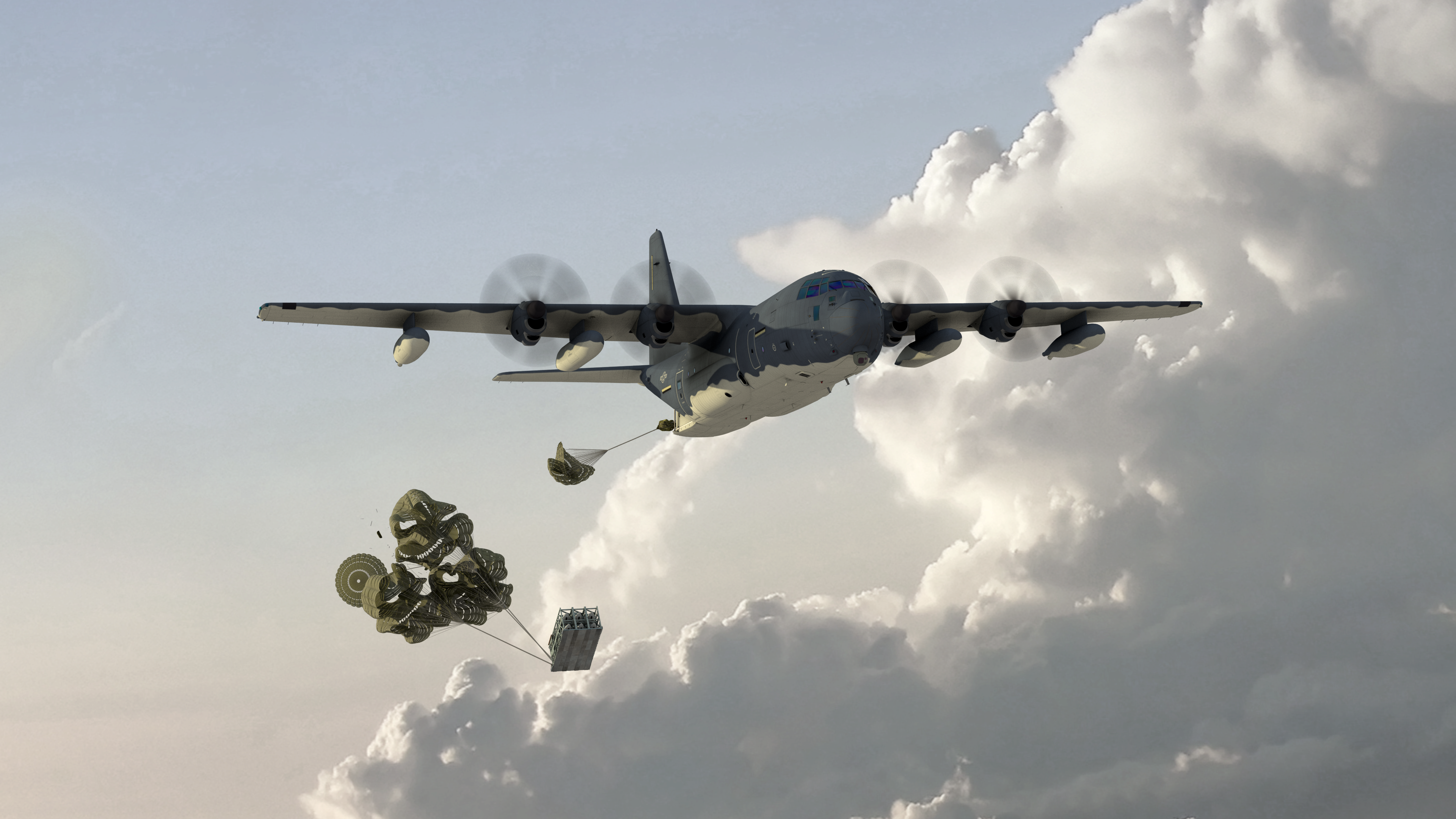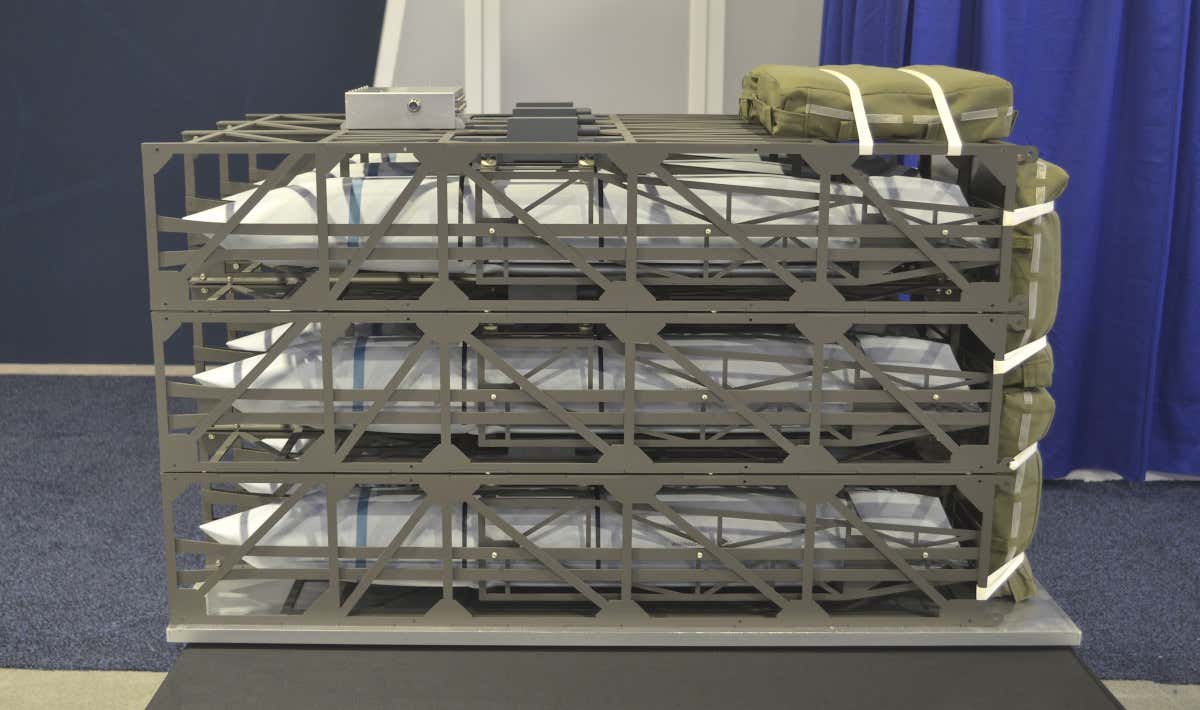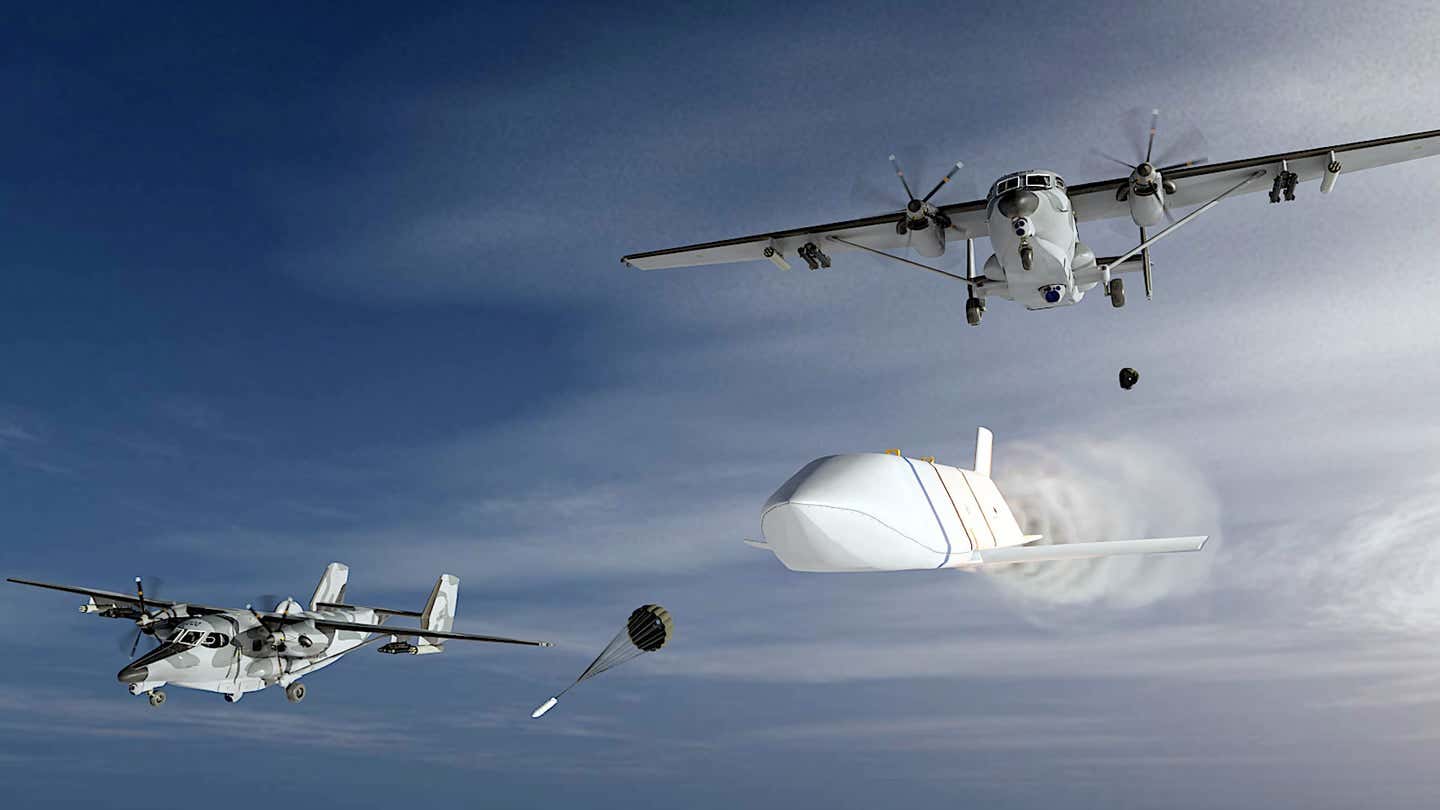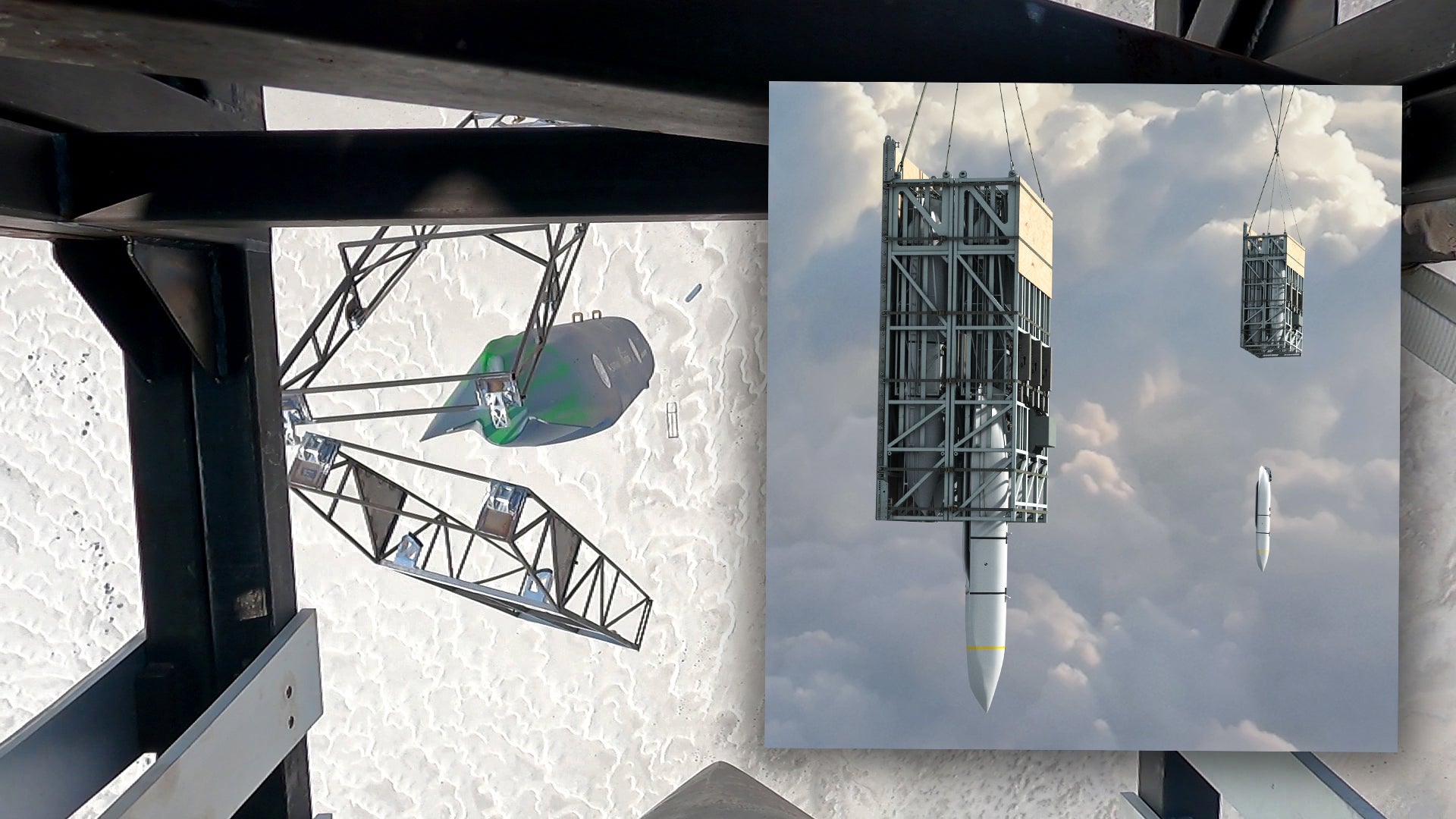The U.S. Air Force and Lockheed Martin have provided new looks and additional insights into a recent full demonstration of the Rapid Dragon air-launched palletized munitions concept. On this occasion, surrogate weapons were delivered from the cargo holds of a C-17A Globemaster III airlifter and an EC-130J Super J, a psychological warfare platform based on the classic Hercules transport. The development reinforces the swift pace established by this program, which 10 months ago existed only in concept form and is managed by the Air Force’s Strategic Development Planning and Experimentation (SDPE). Its implications could extend beyond the United States as well.
The newly released video and photos show the results of the Rapid Dragon tests that took place over White Sands Missile Range, New Mexico, in August of this year. The various demonstrations, according to Lockheed Martin, “covered all aspects of a palletized strike mission up to and including the release of surrogate cruise missiles,” proving out the basic feasibility of the concept.
Rapid Dragon, which you can read about in detail here, is based around using existing airlifters as ‘weapons trucks.’ This, in turn, is intended to offer a way of boosting the amount of available standoff strike assets, an expedient that might prove beneficial if the United States were to find itself at war with China or Russia, for example.
Outfitting cargo aircraft with a palletized standoff-weapons capability also promises to be far cheaper than fielding additional bombers, making this an even more attractive concept at a time when budgets are stretched. It is also scalable, so smaller or larger airlift assets could potentially employ it. At the same time, America’s finite fleet of airlifters would likely be pushed to its absolute maximum capacity during a peer-state conflict, making the actual viability of such a concept, at least when used in a sustained manner, somewhat debatable. Still, it would be a valuable option to have.

LOCKHEED MARTIN
In the August tests involving the airdrops of the Rapid Dragon munition pallet from a C-17 and an EC-130J(SJ), the stores were deployed “at an operationally relevant altitude,” according to Lockheed Martin, although no further details were given about how high the aircraft were flying when they released their payloads.
Once released, and stabilized by parachutes, the munition pallet released surrogate missiles “in quick succession,” these being aerodynamically identical to the AGM-158B Joint Air-to-Surface Standoff Missile-Extended Range cruise missile, or JASSM-ER, which has a publicly stated range of at least 575 miles.
“These Rapid Dragon deployments represent the first end-to-end demonstration of a palletized strike mission, from rolling missile pallets onto an aircraft to in-flight missile release,” said Scott Callaway, Lockheed Martin Advanced Strike Programs director, of the tests at White Sands. “They are a big step toward showing the feasibility of the palletized munitions concept and the ability of mobility aircraft to augment the strike capacity of tactical fighters and strategic bombers.”
Lockheed Martin also provided further details about the targeting process used in the tests. In both the C-17 and EC-130 flights, personnel on the ground used beyond-line-of-sight communications (satellite communication datalinks) to transmit targeting data to the Rapid Dragon system, demonstrating the ability to retarget the missiles while the launch aircraft is airborne.

LOCKHEED MARTIN
From what the Air Force and Lockheed Martin have shown now of the Rapid Dragon system, we also clearly see that it is intended to be a modular, scalable concept, at least with regard to the JASSM-ER. The missiles are each loaded into their own individual “deployment box,” which has an open, metal-framed design and breaks in half to release the missile. They can be arrayed in rows or stacked one on top of each other on a pallet. In real-world testing, so far, we have seen four missiles loaded on a single pallet in a 2-by-2 array, but concept art and models have shown six and nine-missile loads, as well.

JOSEPH TREVITHICK
An official Air Force model showing a Rapid Dragon pallet loaded with nine missiles.
More tests are planned for the months to come and, while the August trials have been billed as an end-to-end test, the missiles deployed were surrogates. Before the end of this year, the next milestone should see an MC‑130J special operations transport drop a real, powered example of the JASSM-ER, to fully demonstrate the capabilities of this intriguing concept.
While not being addressed officially at this time, there also is a potential export possibility that could be an even bigger game-changer for U.S. allies and partners. While none of them have bombers, they do have transport aircraft. With this concept being adaptable enough to even fit in a derivative of the M28 Skytruck, it could give these countries a powerful standoff strike platform option that would augment any limited fighter aircraft capacity they may have.

SIERRA NEVADA CORPORATION
The MC-145B Wily Coyote version of the M28 Skytruck is envisioned as being able to deploy JASSMs.
In addition, the range an airlifter provides greatly increases the reach for such operations over fighter aircraft, unless aerial refueling is available, and even then their carriage capabilities are limited. Also, during major hostilities, any fighters in their inventories will be heavily tasked. As such, this capability makes a C-27J, C-130, or a C-17 a cruise missile carrier with minimal cost or modifications.
Of course, the missiles still have to be purchased, but the JASSM is already in service with Poland, Finland, and Australia, all of which could see great value in the Rapid Dragon concept in the current geopolitical and strategic climate. More countries are likely to be added to the JASSM user list as well. It’s possible Rapid Dragon could be adapted for other missiles, as well, including those less advanced and tightly controlled than JASSM. One could imagine there would be a massive market for such a capability.
There is also the possibility this could be used to launch small drones that can be recovered via parachute or conventional landing after their missions. Launching swarms in this fashion could be hugely beneficial, with a cruise missile-like modular drone that can be rapidly reconfigured to host warheads, sensors, communications, and other payloads.
Regardless, after lots of talk about turning airlifters into arsenal ships and weapons trucks, it looks like a way to do just that with minimal modifications has arrived, and rapidly so, as the name suggests.
Contact the authors: [email protected] and [email protected]

Our Best Look Yet At 'Rapid Dragon' Cargo Plane-Launched Stealth Cruise Missiles In Action
The concept of arming airlifters with cruise missiles is evolving quickly, which is a big deal for the Air Force, and possibly other air arms as well.
